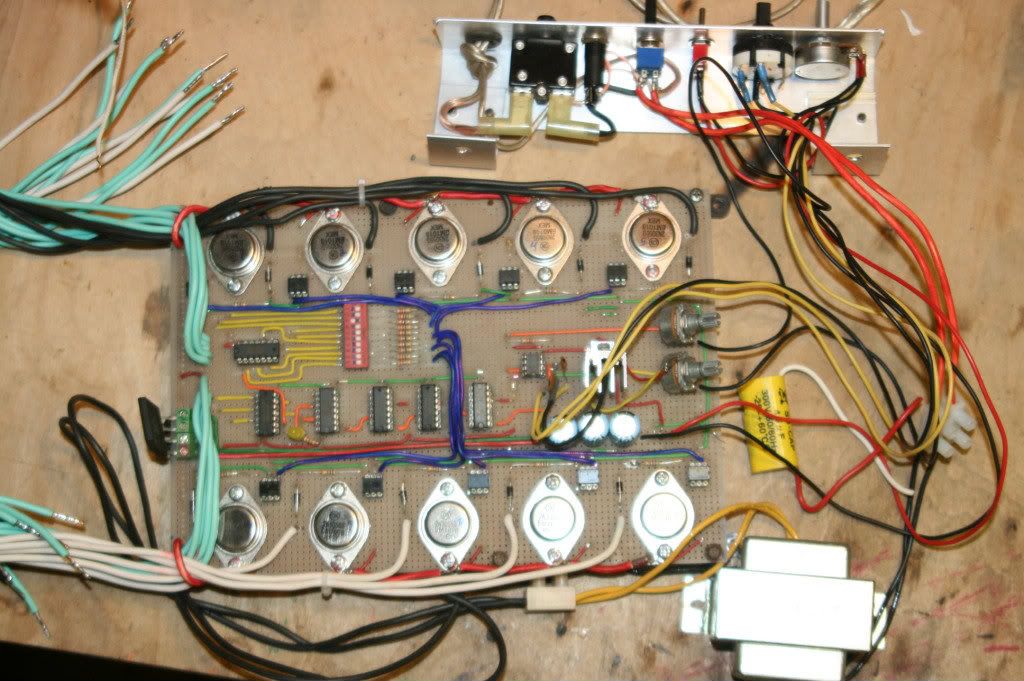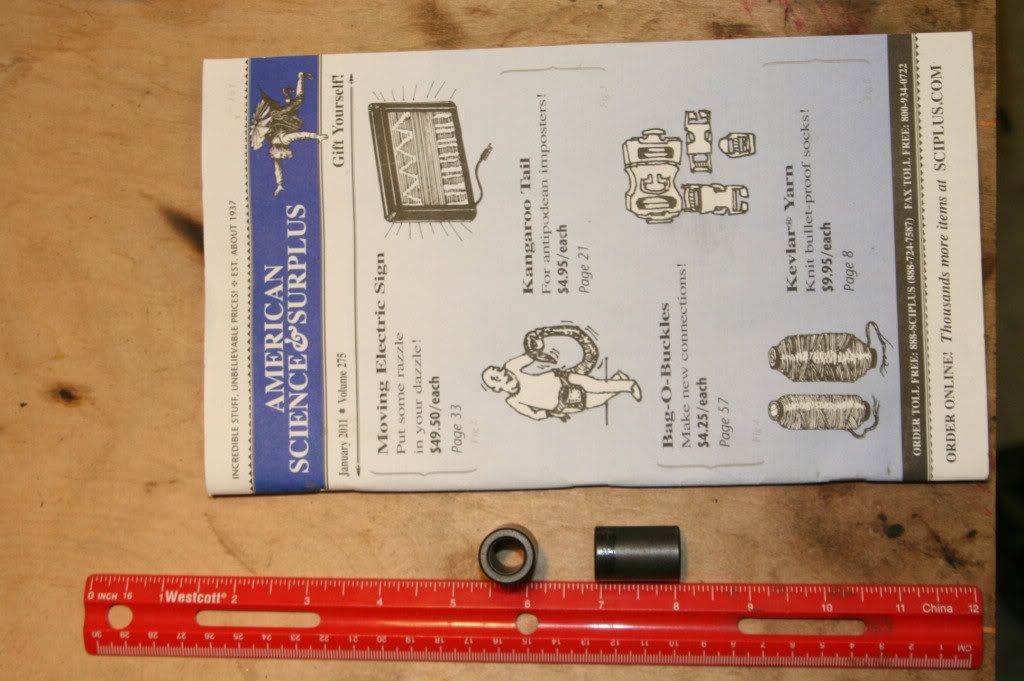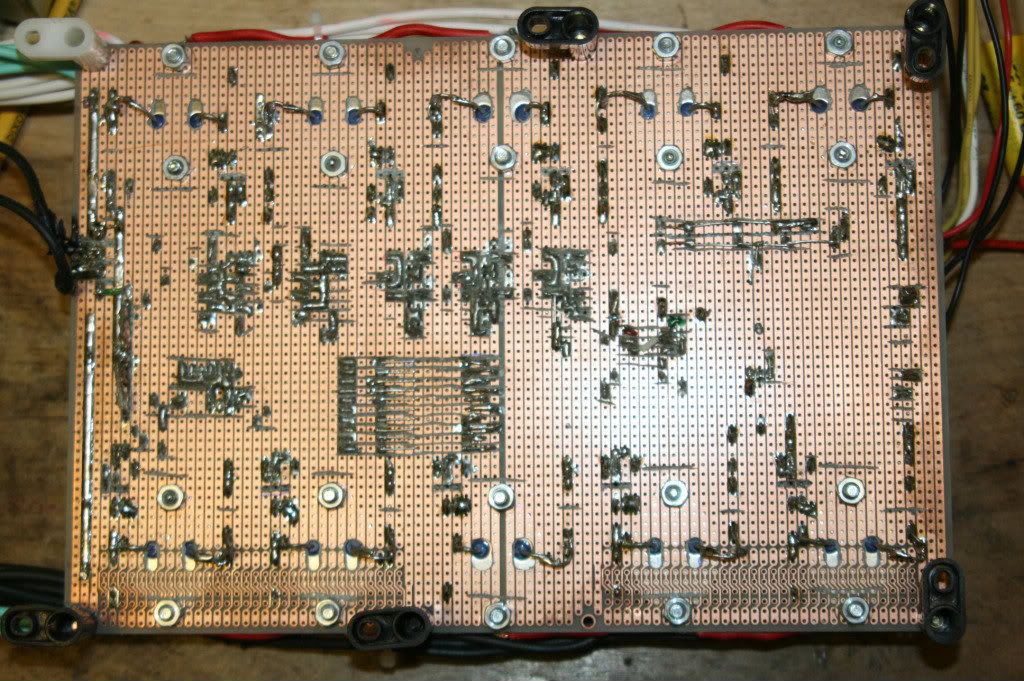yep!
i did indeed view this information a while back, good stuff and its interesting. and it also should be in a new thread! i will make it here:
http://open-source-energy.org/?tid=468
also i will add a link in your original post to get people over there if they see this.
i will post my thoughts on the new thread!
~Russ
The Electronic Polarization Generator also brings up another realization...
What really, causes the molecular movement is the static voltage field. Which is not a magnetic field. As, in the Electronic Polarization Generator, we use a static generator to cause the positive atoms to move towards the negative static charge, as vice-versa. And, in the WFC, we use the static voltage fields to tear HHO apart...
Maybe, instead of using a magnetic operation (magnetic sequential pulses), we use an electro-static operation, as is done in the WFC, but on the tube sections that are under the pulsing cores that you created.
---(~)--------(
power Coil Diode Core Under Coil
The motivating force within all of this technology is the static voltage field.
Static in the sense that it is high voltage with little to no amperage.
We would pulse the negative static charge as the gas and water itself is mostly positively charged (due to 2 Hs). It is also interesting that there are experiments where water is deflected using static charges, or is used to generate static charge.
So, we should be able to motivate water using pulsing static charge.
As we know that this is being done within the WFC and within the steam resonator.
But in these cases we are either tearing water apart, or resonating it to heat it. But, what we really want to do is simply flow it in a single direction. Using the same technique, Pulsing Static Voltage.
Best,
-Dogs
yep!
i did indeed view this information a while back, good stuff and its interesting. and it also should be in a new thread! i will make it here:
http://open-source-energy.org/?tid=468
also i will add a link in your original post to get people over there if they see this.
i will post my thoughts on the new thread!
Hi Russ,
The Electrical Polarization Generator also lead me to an other realization...
Within all of this technology, Stan uses the Static Voltage Field as the prime motivator for tearing water apart, and for shifting back and forth to very quickly heat it up.
It seems to me that what we really need to use to within the EPG is not magnetic pulsing, but once again, Static Voltage Field pulsing.
Here's the setup...
power coil core diode
---(~)------(((([0]))))------>|-----+
| |
+-----------------+
((( : coil
[ : core
->| : diode
o : pipe in the center containing slurry.
What we want is to generate a high negative voltage field to attract the Hydrogen (+) towards a given core.
I believe that this is the key to the EPG and to a new mode of proportion in water.
Leverage the fact that the Static Voltage field attracts or repels the greater content of water H(+).
Best,
-Dogs
yep!
i did indeed view this information a while back, good stuff and its interesting. and it also should be in a new thread! i will make it here:
http://open-source-energy.org/?tid=468
also i will add a link in your original post to get people over there if they see this.
i will post my thoughts on the new thread!
Hi Russ,
The Electrical Polarization Generator also lead me to an other realization...
Within all of this technology, Stan uses the Static Voltage Field as the prime motivator for tearing water apart, and for shifting back and forth to very quickly heat it up.
It seems to me that what we really need to use to within the EPG is not magnetic pulsing, but once again, Static Voltage Field pulsing.
Here's the setup...
power coil core diode
---(~)------(((([0]))))------>|-----+
| |
+-----------------+
((( : coil
[ : core
->| : diode
o : pipe in the center containing slurry.
What we want is to generate a high negative voltage field to attract the Hydrogen (+) towards a given core.
I believe that this is the key to the EPG and to a new mode of proportion in water.
Leverage the fact that the Static Voltage field attracts or repels the greater content of water H(+).
Best,
-Dogs
Hi Russ,
Thanks for setting up the new thread...
The Electrical Polarization Generator also lead me to an other realization...
Within all of this technology, Stan uses the Static Voltage Field as the prime motivator for tearing water apart, and for shifting back and forth to very quickly heat it up.
It seems to me that what we really need to use to within the EPG is not magnetic pulsing, but once again, Static Voltage Field pulsing.
Here's the setup...
power coil core diode
---(~)------(((([0]))))------>|-----+
| |
+-----------------+
((( : coil
[ : core
->| : diode
o : pipe in the center containing slurry.
What we want is to generate a high negative voltage field to attract the Hydrogen (+) towards a given core.
I believe that this is the key to the EPG and to a new mode of proportion in water.
Leverage the fact that the Static Voltage field attracts or repels the greater content of water H(+).
Best,
-Dogs
Hi Russ,
Thanks for setting up the new thread...
The Electrical Polarization Generator also lead me to an other realization...
Within all of this technology, Stan uses the Static Voltage Field as the prime motivator for tearing water apart, and for shifting back and forth to very quickly heat it up.
It seems to me that what we really need to use to within the EPG is not magnetic pulsing, but once again, Static Voltage Field pulsing.
Here's the setup...
power coil core diode
---(~)------(((([0]))))------>|-----+
| |
+-----------------+
((( : coil
[ : core
->| : diode
o : pipe in the center containing slurry.
What we want is to generate a high negative voltage field to attract the Hydrogen (+) towards a given core.
I believe that this is the key to the EPG and to a new mode of proportion in water.
Leverage the fact that the Static Voltage field attracts or repels the greater content of water H(+).
Best,
-Dogs
yep!
i did indeed view this information a while back, good stuff and its interesting. and it also should be in a new thread! i will make it here:
http://open-source-energy.org/?tid=468
also i will add a link in your original post to get people over there if they see this.
i will post my thoughts on the new thread!
~Russ
Hi Russ,
Thanks for setting up the new thread...
The Electrical Polarization Generator also lead me to an other realization...
Within all of this technology, consistently Stan uses the Static Voltage Field as the prime motivator for tearing water apart, and for shifting back and forth to very quickly heat it up.
It seems to me that what we really need to use to within the EPG is not magnetic pulsing, but once again, Static Voltage Field pulsing.
Here's the setup...
power coil core diode
---(~)------(((([0]))))------>|-----+
| |
+-----------------+
((( : coil
[ : core
->| : diode
o : pipe in the center containing slurry.
What we want is to generate a high negative voltage field to attract the Hydrogen (+) towards a given core.
I believe that this is the key to the EPG and to a Stan's "new mode of propulsion in water".
Leverage the fact that the Static Voltage field attracts or repels the greater (positive) content charge of water H(+).
Best,
-Dogs
yep!
i did indeed view this information a while back, good stuff and its interesting. and it also should be in a new thread! i will make it here:
http://open-source-energy.org/?tid=468
also i will add a link in your original post to get people over there if they see this.
i will post my thoughts on the new thread!
~Russ
Hi Russ,
Thanks for setting up the new thread...
The Electrical Polarization Generator also lead me to an other realization...
Within all of this technology, consistently Stan uses the Static Voltage Field as the prime motivator for tearing water apart, and for shifting back and forth to very quickly heat it up.
It seems to me that what we really need to use to within the EPG is not magnetic pulsing, but once again, Static Voltage Field pulsing.
Here's the setup...
power coil core diode
---(~)------(((([0]))))------>|-----+
| |
+-----------------+
((( : coil
[ : core
->| : diode
o : pipe in the center containing slurry.
What we want is to generate a high negative voltage field to attract the Hydrogen (+) towards a given core.
I believe that this is the key to the EPG and to a Stan's "new mode of propulsion in water".
Leverage the fact that the Static Voltage field attracts or repels the greater (positive) content charge of water H(+).
Best,
-Dogs




